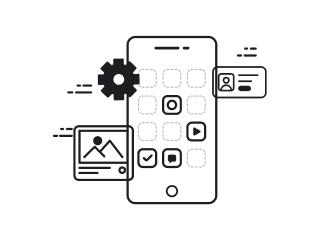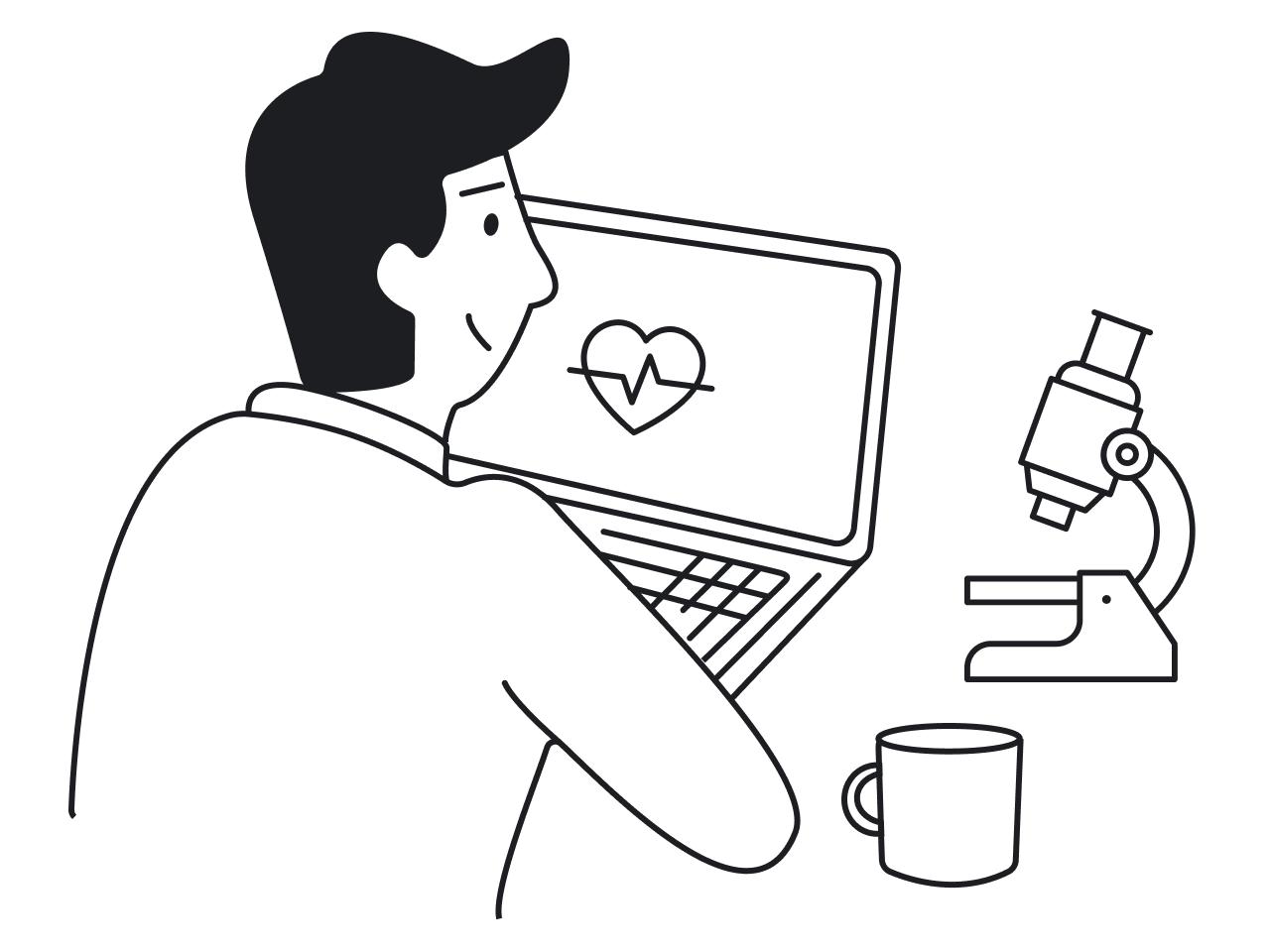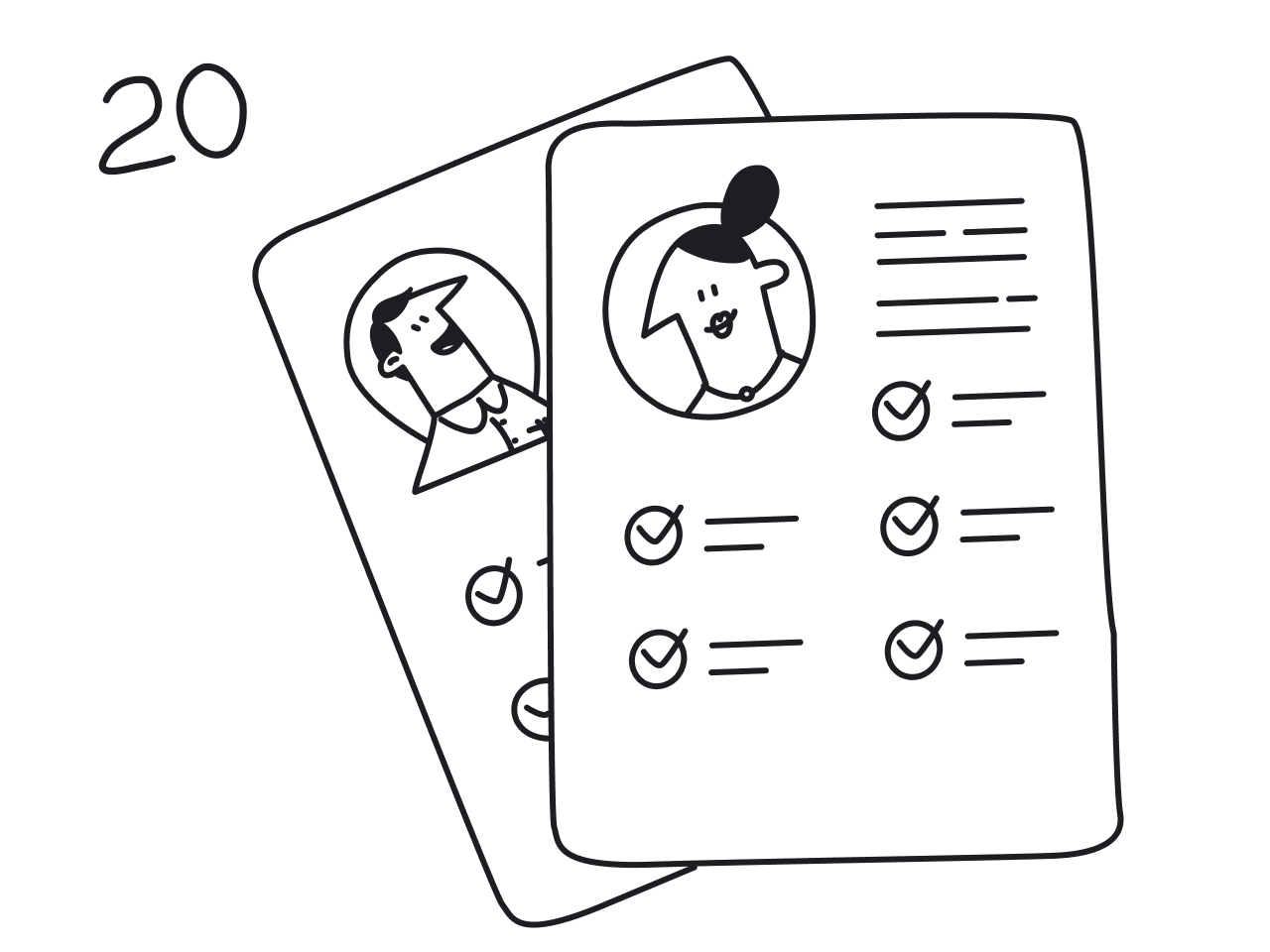Some designers still flinch when they hear “splash page.” The trauma runs deep — think flash intros with 15-second loading animations, music you couldn’t mute, and a “skip” link hidden in the corner. We’ve all been there.
But here’s the twist: splash pages aren’t inherently bad. They were just misused. Today, they’ve evolved into focused, functional tools that can actually improve user experience when used with purpose.
Still skeptical? Reddit is full of people who say, “If you show me a splash screen, I’m leaving.” Fair enough. That’s what happens when splash pages are slow, irrelevant, or just ego in fullscreen. But used well, splash pages can:
- Help segment visitors or filter traffic
- Handle legal, age, or regional requirements
- Create hype around launches or promos
- Set the mood with immersive branding
- Guide users toward the right experience
This article breaks down what a splash page really is (and isn’t), when it makes sense to use one, and how to design it so it adds value, not friction. You’ll also see 15 standout examples and learn practical tips on design, SEO, timing, and personalization.
What is a splash page (and what it’s not)
Before we get into best practices and examples, it helps to define what a splash page actually is and just as importantly, what it isn’t.
A splash page is a short screen that appears before a user reaches the main content of a site. Its job is to deliver one quick message or action, like choosing a region, confirming age, agreeing to terms, or viewing a time-sensitive promo.
Unlike landing pages or homepages, a splash page is not built for depth or conversion. It’s an entry point with a single purpose, and it usually leads directly into either the homepage or a landing page.
How do splash pages differ from landing pages and homepages? All three play a role in the user journey, but they do very different things:
- Landing page: A standalone page created for a specific marketing or ad campaign. Users land here after clicking an email, ad, or social post. The goal is clear — get the visitor to take one action, like registering for a webinar or downloading a whitepaper. Landing pages often sit outside your main site navigation and are built entirely around conversion.
- Homepage: The front door to your website. It serves a wide audience, including prospects, customers, investors, and job seekers. A homepage highlights your main value proposition, offers multiple paths forward, and reflects your brand as a whole.
- Splash page: A temporary screen that appears before either the homepage or a landing page. It usually has just one function — to give a quick update, ask for a choice, or meet a requirement like age or location confirmation. It isn’t part of a campaign and doesn’t try to convert. It just appears, gets its job done, and disappears.
To illustrate the difference, imagine this:
You visit Disney Plus. First, a full-screen prompt appears with a promo or age check. That is the splash page. Click through and you reach the signup screen with pricing and a free trial. That is the landing page. Skip it and you arrive at the full site with all the content. That is the homepage. Each one plays a specific role in the user journey.
.png)
In the past, splash pages were more style than substance — animated intros, loud music, slow loaders. Today, they’re focused, lightweight, and practical. A modern splash page might show a critical update, guide visitors based on location, or highlight an offer that shouldn't be missed.
When used well, splash pages can enhance the user experience by offering relevant context right up front. When used poorly, they create friction. The key is keeping them fast, purposeful, and skippable.
So when exactly should you consider using one?
When (and why) to use a splash page
You don’t want to throw up a splash page just for the sake of it. If it doesn’t serve a purpose, it’s likely to frustrate your users and slow down their journey. But in the right scenarios, a splash page can solve very real UX and business problems, from filtering visitors to ensuring legal compliance to creating moments of surprise or urgency.
When used intentionally, splash pages become more than just a screen that gets in the way — they become a strategic tool in your site’s flow.
Not every site needs one, but in the right context, they can solve very specific problems.
Here are the most common and strategic use cases:
- Highlighting time-sensitive promos or announcements
Splash pages are ideal when you want to make sure every visitor sees something specific right away. Think product launches, seasonal sales, or event announcements. Since the splash page appears before anything else, it’s perfect for amplifying urgency or spotlighting limited-time offers.
- Complying with legal or regional requirements
Sometimes you’re legally required to show something before users access your content. Common examples include age verification for alcohol brands or region selection for international sites. A splash page handles this cleanly, without cluttering your homepage or product pages.
- Segmenting users or offering choices
If your site serves distinct audiences, like personal vs. business users, or content in multiple languages, a splash page can help users choose the right path. This reduces confusion and personalizes their experience right from the start.
- Creating exclusivity or hype
Early-access drops, waitlists, or invite-only offers can all benefit from a splash page. It sets the tone, builds anticipation, and filters in only the people who are ready to engage.
- Keeping users informed without disrupting the main site
Sometimes you need to communicate a quick update or service notice. Rather than burying that info somewhere in the footer, a splash page puts it front and center, then gets out of the way.
Now let’s look at real-world inspiration — best splash pages that aren’t just functional, but also creatively executed.
15 splash page examples that actually work
Splash pages can do a lot more than just check a box. They can engage, delight, and streamline the user experience. These examples of splash pages show how brands across industries use splash pages with purpose, from compliance and personalization to pure branding.
1. Bell’s Brewery uses a splash page that gets everything right
It handles legal age verification with a quick, clear prompt before users can access the site. The playful caution tape messaging adds personality without creating friction. It’s focused, fast, and visually clean, turning a compliance step into a smooth, branded interaction.
.png)
2. IKEA uses a splash page that gets straight to the point
It helps users choose their country and language before entering the site, making sure they land in the right experience. The layout is simple and intuitive, with a helpful location-based recommendation. It’s clean, fast, and user-friendly, turning a practical step into a smooth start to the browsing journey.
.png)
3. Reserved uses a splash page that’s clean, clear, and built for global reach
It prompts users to select their delivery country and language before accessing the store, xensuring localized pricing and shipping info. The layout is minimal and elegant, reflecting the brand’s fashion-forward tone. It does exactly what it needs to do, no clutter, no delay, making it an efficient start to the shopping experience.
.png)
4. Topicals uses a splash page that blends marketing with personalization
It offers a mystery discount but first asks users to select their skin concern, making the experience feel tailored from the start. The splash page design is bold, clear, and visually engaging, with a strong brand presence. It turns a promotional offer into a playful interaction that also helps the brand gather useful insights.
.png)
5. Fragment uses a splash page that’s bold, animated, and brand-defining
Moving shards create an immersive visual metaphor while the copy introduces the project’s mission in just a few lines. It doesn’t ask for anything, it sets a tone. With no menu, no scroll, and minimal interaction, it’s one of the splash page examples that feels more like a cinematic intro than a gateway, capturing attention and establishing brand identity before users dive deeper.
.png)
6. BonSanté uses a splash-like login screen with a professional, clinical tone
It’s not a splash page in the traditional sense, but it acts as a gate by requiring user credentials before granting access to the full platform. The layout is clean and balanced, with informative messaging on the right and a no-friction login form on the left. It combines utility with brand trust, aligning with modern application interface design examples.
.png)
7. Headway uses a splash page that’s playful, fast, and focused on personalization
Instead of sending users straight to content, it starts with a quick quiz entry point by asking for their age group. This lightweight gate helps the brand tailor the experience while keeping engagement high. The design is minimal, with friendly illustrations and a strong value hook, making users curious enough to click without hesitation.
.png)
8. Poolsuite uses a splash page that’s pure nostalgia and branding genius
Modeled after a retro operating system, it immediately immerses users in the brand’s world — a dreamy, sun-soaked digital resort. The interface mimics a 90s desktop, complete with music, faux apps, and kitschy icons. It doesn’t ask for anything upfront, but it sets the tone and pulls users into a curated vibe before they even start exploring. It’s a perfect example of how a splash page can be more than functional — it can be atmospheric.
.png)
9. STR8FIRE uses a splash page that feels like booting into a secret system
The animated loading bar and glitchy digital font instantly set a futuristic, high-tech tone that aligns with the brand’s focus on tokenized entertainment. It’s fast enough to avoid frustration but long enough to build suspense. With its dark blue palette and minimalist layout, this splash page does more than load a site — it establishes a mood.
.png)
10. AWGE uses a splash page that turns entry into an experience
Styled like an old CRT game console, it greets visitors with a blinking “Press Start” message and retro pixel art. There’s no pitch, no context — just pure attitude. It instantly sets the tone for the brand’s offbeat, underground aesthetic, inviting users into a world that feels more like a subculture than a store. It’s not just a splash page — it’s a vibe.
.png)
11. H&M uses a splash page that feels like global fashion diplomacy
Visitors are met with a clean, minimalist country selector, organized by region. No frills, no distractions, just a clear invitation to choose your location and language. It’s not flashy, but it’s efficient. The design quietly signals that H&M is ready to serve a global audience with tailored experiences. It’s functional, respectful, and seamlessly on-brand.
.png)
12. Poolsuite greets you like a digital mirage from a cooler decade
Styled as a retro desktop boot-up, this splash page taps into ‘90s MacOS nostalgia with ASCII art, pixel fonts, and cheeky on-screen commands like “PRESS SPACE TO ENTER THE POOL.” It’s not just quirky, ibut also immersive. With no product pitch in sight, it primes visitors for Poolsuite’s breezy, sun-soaked radio universe. The whole experience screams: "you're not just browsing, you're checking into leisure."
.png)
13. Shiseido uses a sleek splash page to offer 15 percent off the first $100 purchase
The clean design, paired with a clear call to action, makes the promotion easy to understand and act on. This approach maintains the brand's premium feel while boosting conversions through a well-placed incentive.
.png)
14. The Parajanov Museum welcomes visitors with an abstract splash page that sets a dreamlike tone.
With floating objects and surreal animations, the entrance mirrors the artistic spirit of Sergii Parajanov’s work. It invites users to pause, absorb the mood, and step into a world shaped by fantasy, symbolism, and visual poetry.
.png)
15. The Yemen Tribute splash page immediately conveys the gravity of its subject with a powerful image of war-torn reality
It offers two clear paths: dive into a detailed article or explore a map of coalition-led attacks. This stark visual and minimal interface acts as both a guide and a moment of pause, urging visitors to confront the human cost of the conflict before choosing how to engage.
.png)
Seen enough splash page inspiration? Let’s break down what makes these splash pages work and how to build one that actually helps your users.
Best practices for creating high-converting splash pages
Splash pages are brief by nature, but their impact on user experience, conversions, and brand perception can be significant. A great splash page strikes a balance, captures attention, guides the user, and respects their time. Below are key principles to help you design splash pages that convert, not confuse.

Design essentials
A high-performing splash page starts with clarity. Design should be clean, fast, and visually consistent with the rest of your website. It’s not the place to experiment with a completely different aesthetic. Stick to your brand’s colors, typography, and tone to create a seamless transition into the user experience.
Focus your layout around a single, well-defined call to action. Whether it’s a sign-up, a login gate, or a language selector, give users one thing to do and make it obvious. Multiple buttons or competing elements will only distract and reduce effectiveness.
.png)
Eliminate unnecessary elements that create friction. If the goal is to confirm a visitor’s age or location, keep the message short and the interface intuitive. Avoid clutter and never make users guess what you want from them.
Speed is critical. Splash pages should load instantly. Avoid large background videos, complex animations, or anything that might slow the experience down. When in doubt, choose simplicity and performance over visual novelty.
Enhancing user experience
Once your design is solid, turn to the user’s journey. Ask yourself: Is this splash actually helping the visitor?
If the answer is yes, move forward. If not, reconsider whether you need a splash at all.
Good splash pages guide users without disrupting their momentum. Consider using personalization strategies, like geolocation to display localized content or cookies to detect returning visitors and skip the splash entirely. This not only improves experience but shows respect for the user’s time.
Some brands go a step further by using splash pages to collect helpful information. For example, Topicals uses theirs to ask about skin concerns, a tactic that enhances UX while supporting email segmentation. When used well, splash pages can be both functional and strategic.
.png)
SEO considerations
While splash pages don’t naturally support SEO, smart implementation can prevent them from becoming a liability.
First, avoid placing the splash page at your root URL. Use a subdirectory or subdomain instead, and make sure it’s not blocking crawlers. If you're using JavaScript, double-check that key content is still visible to Google.
Make the path forward clear. Search engines and users alike should be able to find the main content without getting stuck. A simple <a href> link to your homepage or product page is enough to maintain discoverability.
Lastly, don’t try to “optimize” your splash with keywords. These pages are too lightweight for that to matter and keyword stuffing can actually harm credibility. The best SEO move you can make is to ensure your splash is fast, clear, and never in the way of more valuable content.
Once you’ve mastered the basics, it’s time to take your splash pages further. Let’s look at how personalization and smarter strategy can turn a simple splash into a high-impact experience.
Advanced strategies and personalization
Once you’ve covered the basics, splash pages become a creative space for experimentation. The next step is all about using smart, adaptive content. Personalization is no longer just a bonus; it’s the difference between forgettable and effective.

Make it personal (but not weird)
A standard splash page does the job, but a personalized one can do so much more. When it recognizes where a visitor came from or what they might be looking for, it can guide them more meaningfully.
For example, if someone arrives from a Product Hunt campaign, the splash might read: “👋 Hey Product Hunters! Here’s 20% off to celebrate our launch.” That turns a static welcome into a timely, relevant message.
Take it a step further. If a visitor is returning after viewing your pricing page, you could show a splash that says: “Still thinking it over? Here’s a free 15-minute consult.” This approach makes the interaction feel thoughtful, not random.
To avoid going overboard, segment users by traffic source, behavior, or simple characteristics like location or industry. Tools such as ConvertFlow or Mutiny can automate this process by integrating with your CRM or analytics to deliver targeted messages.
Start with straightforward segmentation:
- New versus returning users
- Email versus organic traffic
- Regional or country-specific messaging
Experiment with variations and see what drives better engagement.
Sync splash pages with your marketing machine
Your splash page should align with your broader marketing efforts. It should not feel like a side feature but an extension of your brand’s story.
- Email campaigns
If you send subscribers an update about a new feature, follow up with a splash that echoes the message. For example, show “🚀 Try our new AI assistant — watch the demo” rather than sending them to a generic homepage.
- Social media promos
When someone clicks from a tweet or influencer post, a splash that reads “Hey Twitter fam! Here’s your exclusive early access” creates a smooth, connected experience.
- Blog and SEO content
A splash that appears when readers finish an article can suggest “Liked this guide? Download the full eBook.” This adds value without interrupting the flow.
- Paid ads
Instead of building countless landing pages, use splash variants triggered by URL parameters. If an ad promotes a free trial, make sure the splash offers exactly that. It eliminates disconnect and builds trust.
- Remarketing and CRM-based nudges
When someone revisits your site after browsing pricing, a splash saying “Need help choosing? Book a call” can feel like a gentle, helpful reminder instead of a generic prompt.
Ensure every splash fits your overall brand identity. If your social campaign uses a bright, playful design, don’t follow up with a stark and formal splash. Consistency strengthens recognition and trust.
Addressing common concerns and pitfalls
Splash pages can be powerful tools, but they’re also polarizing. Users won’t hesitate to voice frustration when something feels intrusive or unnecessary. In this section, we’ll explore the most frequent complaints and how to address them with empathy and smart design.

“It’s a waste of my time. I just want to get to the content.”
This is the most common frustration. If a splash page doesn’t provide instant value, it becomes a blocker instead of a guide.
How to fix it:
- Provide clear value up front, such as “20% off,” “Enter age,” or “Early access preview.”
- Keep the message short. One line of copy and one CTA is enough.
- Make it easy to skip. A big, clear exit or “Enter site” button should always be available.
- Control frequency. Show the splash once, not on every visit.
- If it doesn’t serve a real purpose, skip it altogether.
“I can’t figure out how to close this thing.”
Hidden or tiny close buttons are a UX crime. On mobile, they’re even worse.
How to fix it:
- Ensure the close icon or button is highly visible and large enough to tap.
- Offer alternatives like “No thanks” or “Skip this step.”
- Label all exit options for screen readers.
- If the splash is mandatory, like an age gate, guide users through it clearly.
No one should feel trapped at the front door of your website.
“This is hurting your SEO. I can’t find what I came for.”
Users won’t always say it, but if your splash blocks search engine visibility or buries real content, they’ll bounce fast.
How to fix it:
- Avoid placing splash content directly on the root URL.
- Make sure crawlers and users can reach core content through visible links or buttons.
- Use a noindex meta tag for splash pages that don’t offer SEO value.
- Consider bypassing splash pages for traffic from search engines or bots.
Google rewards accessibility and substance, not empty roadblocks.
“This splash page is not accessible to me.”
When splash pages don’t consider accessibility, they exclude entire groups of users.
How to fix it:
- Trap keyboard focus inside splash modals, so users can navigate by tabbing.
- Use semantic HTML and ARIA roles like aria-modal and aria-label.
- Ensure color contrast is high and font sizes are readable.
- Test across devices and screen readers to catch potential blockers.
- Make modals responsive so they scale or scroll properly on all screens.
Accessibility isn’t optional — it’s essential, especially in ux design for seniors.
“It disrupted my flow and I lost interest.”
Ill-timed splashes interrupt users mid-task. And when that happens, they often leave.
How to fix it:
- Use smart triggers: show splash pages on scroll, after delay, or at exit intent.
- Avoid interruptions during key flows like checkout, sign-up, or content reading.
- Display splashes after users engage, not before.
- Let users explore before presenting offers or promotions.
A good splash behaves like a good host: it shows up at the right time, not the moment guests walk in.
Technical tips for building splash pages right
Even great content can be undone by poor technical implementation. Here’s how to build splash pages that load fast, behave reliably, and enhance, not hinder, user experience.
Choose the right format
- Use modal overlays when possible. They allow content to stay on one page and are better for SEO.
- Use separate splash pages cautiously. They’re easier to build but often come with indexing and tracking issues.
Keep performance top of mind
- Compress images and animations to minimize load time.
- Avoid large libraries or slow-loading scripts just for splash functionality.
- Prioritize speed, especially for mobile users.
Test across platforms
- Check performance and layout on desktop and mobile browsers, similar to how successful dashboard design examples handle responsiveness.
- Run tests in Chrome, Safari, Firefox, and Edge.
- Use accessibility tools to ensure inclusivity.
Manage user state effectively
- Store splash dismissals in cookies or local storage to prevent repeat appearances.
- Provide a way for users to revisit splash content, like linking to it from the footer.
- Don’t show splash pages during essential flows like checkout or onboarding.
Track, measure, and iterate
- Log impressions, clicks, exits, and conversions.
- Run A/B tests for copy, timing, and design elements.
- Monitor key metrics like bounce rate and goal completions.
Roll out with intention
- Start with a limited rollout to test effectiveness.
- Ensure splash pages fail gracefully — if the script breaks, users should still see your main content.
- Always ask: is a splash the right format? Sometimes a banner, hero section, or pop-up works better.
Final thought on splash page meaning and impact
Splash pages are not inherently good or bad. They are tools. Used with purpose, they guide users, share important updates, or create moments of engagement. Used poorly, they frustrate and get in the way.
The goal is clarity. If a splash page helps your visitors, keep it. If it slows them down, rethink it. Keep it fast, focused, and part of a larger strategy.
If your splash page improves clarity, boosts conversions, or solves a real problem, it belongs. If not, leave it out.
Ready to create splash pages that actually help users instead of scaring them off?
Start by exploring how top brands approach web design examples, learn from high-converting saas website examples, and dive into smart UI patterns with card UI examples. Each one offers ideas you can adapt to make your splash pages more strategic, user-friendly, and effective.








.png)





